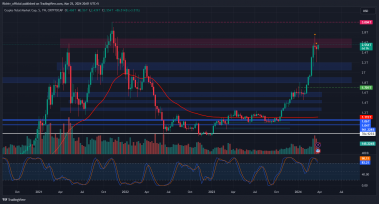When evaluating market valuation, it’s essential to acknowledge that the market isn’t a uniform entity. By segmenting the market into its 11 Global Industry Classification Standard (GICS) sectors—including communication services, consumer discretionary, consumer staples, energy, financials, healthcare, industrials, information technology, materials, real estate, and utilities—we can discern significant variations in valuation.
Recent assessments of sectors using traditional valuation metrics such as price-to-earnings (P/E), price-to-sales (P/S), price-to-book (P/B), and price-to-free-cash-flow (P/FCF) ratios reveal that energy, real estate, and financials emerge as the most undervalued sectors compared to the overall market. Conversely, industrials, healthcare, and information technology are presently perceived as overvalued.
This divergence in sector valuations underscores the importance of adopting a nuanced approach to investing, where opportunities for value lie in delving into specific sectors rather than making broad market generalizations.
For investors seeking to capitalize on these discrepancies, various sector ETFs are available, providing a straightforward means to invest in either undervalued sectors poised for growth or to navigate sectors that currently appear overpriced.
Tech Titans & Healthcare Heroes:
The technology sector’s valuation has surged, propelled by the rapid growth and interest in artificial intelligence (AI), alongside robust earnings reports from industry leaders.
For instance, Nvidia (NASDAQ: NVDA), a semiconductor giant, has reported remarkable financial achievements, including record quarterly revenue of $22.1 billion—a 22% increase from the previous quarter and a staggering 265% rise year-over-year.
Nvidia’s impressive revenue accomplishments, driven by its dominance in AI and data center markets, underscore the sector’s potential for rapid expansion and profitability. The technology sector thrives on continuous innovation, leading to new products, services, and efficiencies. This ongoing evolution presents opportunities for significant revenue growth and higher valuations.
Conversely, the healthcare sector demonstrates high valuation metrics due to its critical societal role and the non-discretionary nature of its products and services. Demand for healthcare solutions remains stable or even increases regardless of economic conditions, rendering companies in this sector less sensitive to economic cycles.
For instance, Novo Nordisk (CSE: NOVOb) and Eli Lilly (NYSE: LLY) have witnessed significant interest in their weight loss drugs, Ozempic and Wegovy, reflecting the persistent demand for healthcare solutions addressing prevalent health issues. Additionally, Viking Therapeutics (NASDAQ: VKTX) experienced a 90% stock surge following promising Phase 2 testing results for its experimental weight loss drug, highlighting the potential for innovation and subsequent investor enthusiasm in the healthcare sector.
Investing in Technology and Healthcare Sectors with ETFs:
For those seeking to leverage continued momentum in these sectors, focusing on large caps might involve ETFs such as the Technology Select Sector SPDR Fund (XLK) and the Health Care Select Sector SPDR Fund (XLV), which track technology and healthcare in the S&P 500, respectively.
For a broader sector view encompassing more mid and small-cap companies, Vanguard’s ETFs—such as Vanguard Information Technology ETF (VGT) and Vanguard Health Care ETF (VHT)—provide comprehensive coverage.
Energy Challenges & Financial Sector Struggles:
Conversely, several sectors appear significantly undervalued compared to the overall market. The energy sector, for example, has encountered substantial challenges, with prices for WTI Crude, Brent Crude, and Natural Gas plummeting from their highs in Fall 2023.
The energy sector is inherently cyclical and highly sensitive to global economic conditions. Prices for commodities such as WTI Crude, Brent Crude, and Natural Gas are directly impacted by geopolitical events, changes in supply and demand dynamics, and broader economic trends, leading to significant price volatility.
This volatility translates into fluctuating revenues and profits for energy companies, making it challenging to maintain consistent growth and leading investors to apply lower valuation multiples when discounting their future growth.
Moreover, the energy sector’s capital-intensive nature, requiring substantial investments in exploration, production, and infrastructure, coupled with increasing regulatory pressures and a global shift towards renewable energy, adds to its risk profile. These factors necessitate large ongoing capital expenditures, impacting free cash flows and making the sector more susceptible to economic downturns.
Despite this downturn, oil and gas majors like Exxon Mobil (NYSE: XOM) and Chevron (NYSE: CVX) have maintained strong margins and continue to generate high levels of free cash flow, indicating resilience in their operations amidst price volatility.
Similarly, the financial sector, encompassing banks and financial institutions, is characterized by its cyclical nature and direct correlation with economic cycles. It is particularly sensitive to interest rate movements, regulatory changes, and economic health.
Additionally, the financial sector’s performance is closely tied to the broader economy’s health, including employment rates, consumer spending, and business investments. As economic conditions deteriorate or uncertainties increase, the sector often faces reduced profitability due to higher loan defaults and tighter margins, further contributing to its historically low valuations.
The sector’s valuation is also impacted by the perception of risk, especially credit risk and market risk, which can fluctuate based on economic conditions and regulatory environments.
Currently, the financial sector is still grappling with the aftermath of last year’s regional bank crisis, which witnessed the collapse of Silicon Valley Bank, Signature Bank (OTC: SBNY), and Silvergate Bank. The situation escalated when Credit Suisse (SIX: CSGN) floundered and was ultimately acquired by UBS. The recent crises have underscored the sector’s vulnerability to systemic risks, reducing investor confidence.
Today, the sector remains under pressure, with ongoing concerns about regional banks’ exposure to commercial real estate loans, highlighting systemic vulnerabilities. The national vacancy rate stood at 18% in January 2024, pointing to significant challenges for banks with exposure. Many properties are now facing steep discounts to their asset values, further exacerbating the sector’s undervaluation.
Investing in Energy and Financial Sectors with ETFs:
For investors interested in these undervalued sectors, several ETFs offer targeted exposure. For the S&P 500 sectors, the Energy Select Sector SPDR Fund (XLE) and the Financial Select Sector SPDR Fund (XLF) offer exposure.
For a broader perspective encompassing a wider range of companies across market capitalizations, Vanguard’s ETFs—such as Vanguard Energy ETF (VDE) and Vanguard Financials ETF (VFH)—are viable holdings.




 By:
By:
